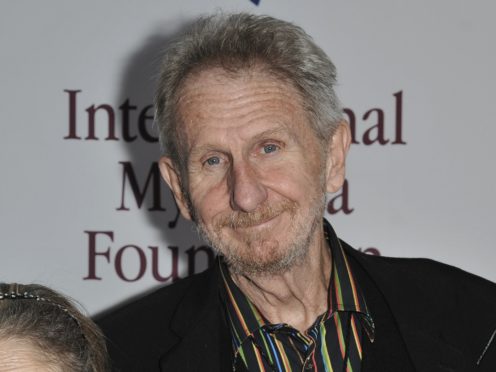Rene Auberjonois, a prolific actor best known for his roles on the television shows Benson and Star Trek: Deep Space Nine, has died aged 79.
The actor died on Sunday at his home in Los Angeles of metastatic lung cancer, his son Remy-Luc Auberjonois told The Associated Press.
Rene Auberjonois worked constantly as a character actor in several golden ages, from the dynamic theatre of the 1960s to the cinema renaissance of the 1970s to the prime period of network television in the 1980s and 90s — and each generation knew him for something different.
(Minions say: We're sad to confirm that René passed away today, Sunday, December 8) https://t.co/lmYlIqS6Ld
— Rene Auberjonois (@reneauberjonois) December 8, 2019
For film fans of the 1970s, he was Father John Mulcahy, the military chaplain who played straight man to the doctors’ antics in M.A.S.H.
It was his first significant film role and the first of several for director Robert Altman.
For sitcom watchers of the 1980s, he was Clayton Runnymede Endicott III, the hopelessly highbrow chief of staff at a governor’s mansion on Benson, the ABC series whose title character was a butler played by Robert Guillaume.
And for sci-fi fans of the 1990s and convention-goers ever since, he was Odo, the shape-shifting Changeling and head of space-station security on Star Trek: Deep Space Nine.
“I am all of those characters, and I love that,” Auberjonois said in a 2011 interview with the Star Trek website.
“I also run into people, and they think I’m their cousin or their dry cleaner. I love that, too.”
Auberjonois was born in New York in 1940, the son of Fernand Auberjonois, Swiss-born foreign correspondent for US newspapers, and the grandson of a Swiss post-impressionist painter also named Rene Auberjonois.
The younger Rene Auberjonois was raised in New York, Paris, and London, and for a time lived with his family in an artists’ colony in Rockland County, New York, whose residents included the actors John Houseman, Helen Hayes and Burgess Meredith.
After graduating from college at Pittsburgh’s Carnegie Institute of Technology, now Carnegie Mellon, Auberjonois hopped around the country joining theatre companies, eventually landing three roles on Broadway in 1968, including playing the Fool in a long-running version of King Lear.
The following year he would play Sebastian Baye opposite Katharine Hepburn in Coco, a play on the life of designer Coco Chanel that would earn him a Tony for best actor in a leading role in a musical.
He would later see Tony nominations for 1973’s The Good Doctor, 1984’s Big River, and 1989’s City of Angels.
In 1970, Auberjonois began his run with Altman, playing Mulcahy in M.A.S.H.
